Choosing the right plywood for your construction project is crucial, especially when it comes to working with concrete formwork. This article breaks down the key differences between formply waterproof and regular plywood, explaining why formply is often the superior choice for creating strong and smooth concrete structures. If you’re involved in construction and want to understand which type of ply will best meet your needs for pouring concrete, then keep reading!
What Exactly is Plywood and Why Does it Matter in Construction?
Plywood is a versatile construction material made by gluing together several thin sheets of wood, called veneers or plies, with the grain of each layer running perpendicular to the adjacent layer. This cross-graining significantly increases the structural strength and stability of the plywood product, making it much stronger than solid wood of the same thickness. Because plywood is crucial in so many building projects, understanding the different types is really important. It’s used for everything from walls and roofs to furniture and, of course, concrete formwork.
Think of it like this: imagine trying to break a stack of crackers where all the lines are going the same way. It’s pretty easy, right? But if you alternate the direction of the lines in each cracker, it becomes much harder to break. That’s the basic idea behind how plywood makes such a strong sheet of material. This strength allows plywood to create stable and reliable structures that can withstand various loads and stresses.
What is Regular Plywood and What are its Common Uses?
Regular plywood is the standard type of plywood you’ll find in most plywood stores. It’s generally used for interior applications where moisture isn’t a major concern. You’ll find regular plywood used for things like wall sheathing, subfloors, furniture making, and packaging. While regular plywood offers good strength, its plywood bond is not designed to withstand prolonged exposure to moisture or the heavy demands of concrete pouring.

Regular plywood is typically made with different types of wood for the core and the outer layers. The plywood core might be a less expensive softwood, while the face veneers could be a more attractive hardwood. While strong, regular plywood doesn’t have the specialized surface treatment that formply does, making it less suitable for applications involving wet concrete.
What is Formply and How is it Specifically Designed for Concrete?
Formply, short for formwork plywood, is a type of plywood specifically designed for used for concrete formwork. It’s an exceptionally strong plywood engineered to withstand the pressure exerted by wet concrete. The key difference lies in its surface, which is coated with a smooth, durable, phenolic resin impregnated paper. This coating protects the plywood core from moisture and abrasion, allowing it to be reused multiple times. Formply is a structural plywood, meaning it’s designed to handle significant loads.
Because formply is specifically designed for concrete in a mould, it has several key advantages. The smooth surface results in a smooth concrete finish, reducing the need for extensive post-pouring work. The waterproof nature of the coating means that formply can withstand repeated exposure to wet concrete without delaminating or losing its structural integrity. This means that formply is a cost-effective solution in the long run.
Formply vs. Regular Plywood: What are the Key Differences in Their Construction?
The fundamental difference between formply and regular plywood lies in their construction and intended use. While both are made of plywood layers, formply is made using a higher grade of veneer and a stronger adhesive, often a type-a marine bond (although formply is not fully waterproof like true marine plywood). Crucially, formply sheets have that special phenolic resin coating bonded to the surfaces. This coating makes formply waterproof to a certain extent and incredibly durable.
| Feature | Regular Plywood | Formply |
|---|---|---|
| Surface | Typically unfinished wood veneer | Phenolic resin film |
| Water Resistance | Limited | High |
| Durability | Moderate | High |
| Intended Use | Interior, general construction | Concrete formwork, exterior applications |
| Reusability | Lower (prone to water damage) | Higher (due to protective film) |
| Plywood Bond | Standard construction adhesive | Stronger, often type-a marine bond |
Unlike regular plywood, which might warp or delaminate when exposed to moisture, formply is designed to hold its shape and integrity even under the weight and moisture of wet concrete. This means formply sheets can be reused many times, making it a more economical choice for formwork applications.
Why is Formply Waterproofing Important for Concrete Formwork?
The waterproof nature of formply is paramount when it comes to used for concrete formwork. When concrete is poured, it’s a very wet mixture. Regular plywood, without a protective coating, would absorb this moisture, causing it to swell, warp, and potentially delaminate. This would not only compromise the strength of the formwork but also result in a rough and uneven finish on concrete.

Formply waterproofing, thanks to its phenolic resin coating, prevents this moisture absorption. This is crucial for several reasons:
- Structural Integrity: It ensures the plywood doesn’t weaken during the concrete pouring process.
- Smooth Concrete Surface: The waterproof barrier helps create a smooth concrete surface, reducing the need for costly finishing work.
- Reusability: By preventing water damage, the formply can be used for multiple pours, offering significant cost savings. Some high-quality formply can be reused 14-27 times, compared to regular plywood which might only last 1-2 times in concrete formwork.
- Prevents Staining: The coating also prevents the wood grain from transferring onto the smooth concrete.
For projects where a clean and professional finish on concrete is desired, formply needs to be waterproof.
Can Marine Plywood be Used as an Alternative to Formply?
While both marine plywood and formply offer superior water resistance compared to regular plywood, they are designed for different purposes. Marine plywood is manufactured using waterproof glue and high-quality veneers, making it ideal for boat building and other applications where constant water exposure is expected. It typically boasts the strongest type of plywood bond available.
However, marine plywood generally lacks the hard, smooth, resin-coated surface of formply. While it can withstand moisture, it might not provide the same smooth finish on concrete that formply does. Additionally, marine plywood tends to be more expensive than formply.
Therefore, while marine plywood is waterproof like marine plywood, formply is specifically designed for the rigors of concrete formwork, including the need for a smooth surface. You could use marine plywood, but formply offers a more tailored and often more cost-effective solution for this particular application.
How Many Times Can You Reuse Formwork Plywood Compared to Regular Plywood?
Reusability is a significant factor when considering the cost-effectiveness of plywood used for formwork. Regular plywood, if used for concrete formwork, will likely only be usable for 1-2 times before the moisture and pressure cause significant damage. This is because its plywood bond and surface are not designed to withstand these conditions repeatedly.
On the other hand, formwork plywood, thanks to its durable and waterproof coating, can be reused much more extensively. High-quality formply can often withstand concrete pouring processes for 14-27 times or even more with careful handling and maintenance. This significant difference in lifespan makes formply a far more economical choice for repeated formwork applications, even if the initial cost is slightly higher than regular plywood. This is a key reason why construction professionals prefer formply is used.
What are the Key Considerations When Choosing Between Formply and Regular Plywood?
When deciding between formply and regular plywood for your project, consider the following:
- Application: If you’re working with concrete formwork, formply is the clear choice. For general interior construction, regular plywood may suffice.
- Water Exposure: For applications where the plywood will be exposed to moisture, even beyond concrete, formply offers better resistance.
- Surface Finish: If you need a smooth concrete surface, formply is essential.
- Reusability: If you plan to reuse the plywood sheets, formply offers significantly better longevity.
- Budget: While formply might have a higher upfront cost, its reusability can make it more cost-effective in the long run, especially for larger projects.
- Structural Requirements: Both types of plywood offer structural strength, but ensure the structural rating of the chosen plywood meets your project’s needs. You might even consider structural plywood for added strength in other areas of your build.

Understanding these factors will help you select the type of plywood that best suits your specific project requirements and budget.
Where Can You Find High-Quality Formply for Your Construction Needs?
Finding a reliable plywood supplier is crucial for ensuring the quality and performance of your materials. As a factory specializing in engineered wood products and building materials, we at Jsylvl provide high-quality formply designed to meet the demanding needs of concrete formwork. We utilize multiple production lines and export our formply sheets to various countries, including the USA, North America, Europe, and Australia.
Our formply boasts features like high strength and stability, consistent dimensions, and durable surface finishes. We understand the concerns of our customers, like Mark Thompson, who prioritize quality and competitive pricing. That’s why we focus on delivering high-quality plywood that meets relevant building codes and standards. You can explore our range of formply options and other engineered wood products, such as our structural ply, on our website. You can also find us showcasing our products at various exhibitions.
What Makes Sustainable Plywood Like Formply a Smart Choice?
In today’s environmentally conscious world, choosing sustainable plywood options like formply is a responsible decision. While not all formply is certified sustainable, opting for products from manufacturers committed to responsible forestry practices helps to protect our forests. The durability and reusability of formply also contribute to its sustainability, as it reduces the need for frequent replacements, thereby conserving resources.
Choosing sustainable plywood not only benefits the environment but can also enhance your project’s reputation and appeal to environmentally conscious clients. Look for certifications like FSC to ensure the plywood you choose comes from responsibly managed forests.
Key Takeaways:
- Formply is specifically engineered for concrete formwork due to its waterproof and durable phenolic resin coating.
- Regular plywood lacks this protective coating and is not suitable for prolonged exposure to moisture or the demands of concrete pouring.
- Formply waterproofing is crucial for maintaining structural integrity, achieving a smooth concrete surface, and enabling multiple reuses.
- While marine plywood offers excellent water resistance, formply is tailored for concrete formwork with its smooth surface and is often more cost-effective.
- Formply can be reused many more times than regular plywood in concrete formwork, making it a more economical choice in the long run.
- Consider the application, water exposure, surface finish requirements, budget, and structural needs when choosing between formply and regular plywood.
- Sourcing high-quality plywood, like the formply offered by Jsylvl, is essential for successful construction projects.
- Opting for sustainable plywood options contributes to responsible forestry practices and resource conservation.
By understanding the differences between formply and regular plywood, you can make informed decisions that lead to stronger, smoother, and more cost-effective concrete structures.
Post time: Jan-20-2025




